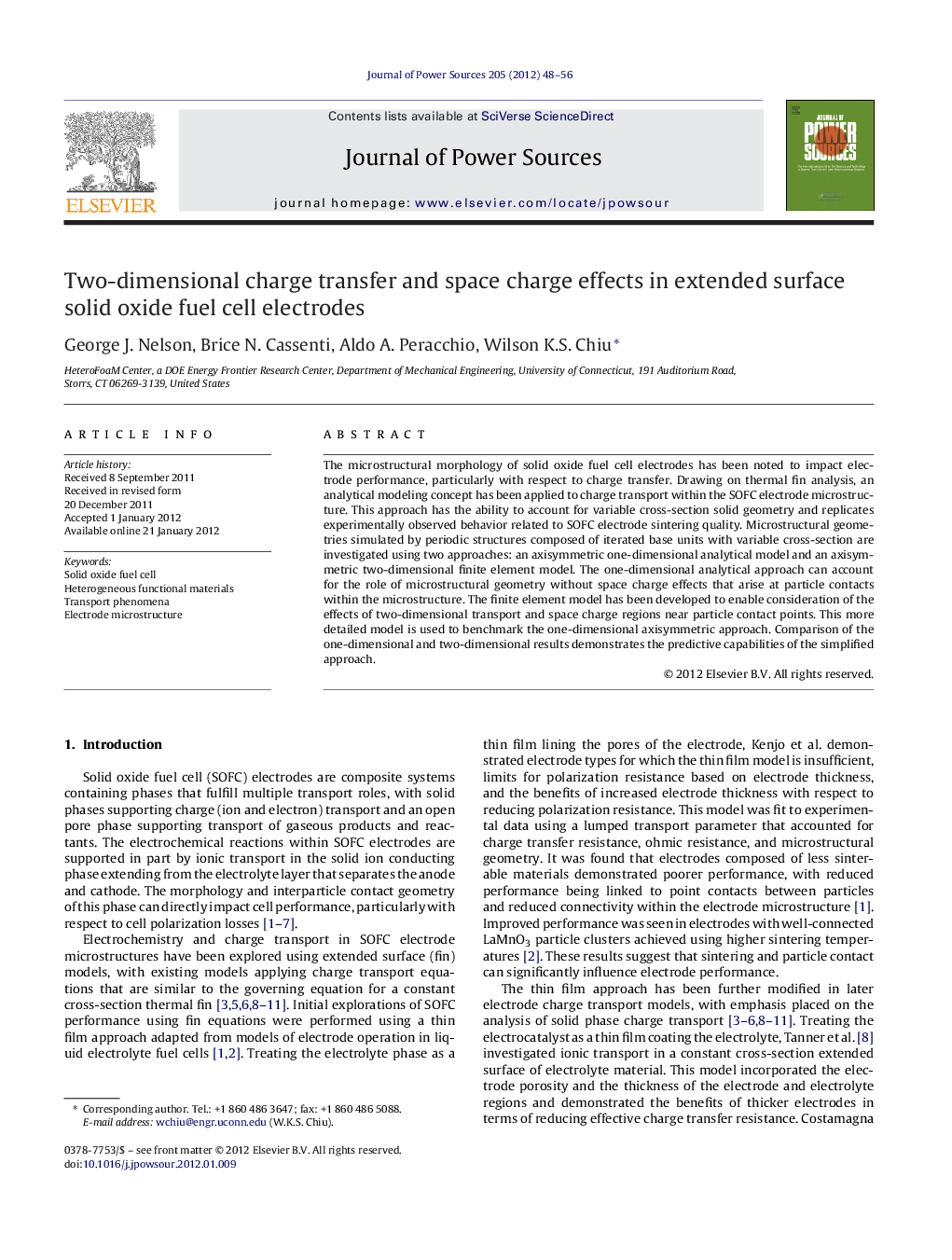| Article ID | Journal | Published Year | Pages | File Type |
|---|---|---|---|---|
| 1288112 | Journal of Power Sources | 2012 | 9 Pages |
The microstructural morphology of solid oxide fuel cell electrodes has been noted to impact electrode performance, particularly with respect to charge transfer. Drawing on thermal fin analysis, an analytical modeling concept has been applied to charge transport within the SOFC electrode microstructure. This approach has the ability to account for variable cross-section solid geometry and replicates experimentally observed behavior related to SOFC electrode sintering quality. Microstructural geometries simulated by periodic structures composed of iterated base units with variable cross-section are investigated using two approaches: an axisymmetric one-dimensional analytical model and an axisymmetric two-dimensional finite element model. The one-dimensional analytical approach can account for the role of microstructural geometry without space charge effects that arise at particle contacts within the microstructure. The finite element model has been developed to enable consideration of the effects of two-dimensional transport and space charge regions near particle contact points. This more detailed model is used to benchmark the one-dimensional axisymmetric approach. Comparison of the one-dimensional and two-dimensional results demonstrates the predictive capabilities of the simplified approach.
► Analytical approach developed for charge transfer in variable cross-section geometry. ► Model replicates experimentally observed behavior related to sintering quality. ► Periodic structures of iterated base units with variable cross-section are investigated. ► SOFC electrode microstructure is noted to impact electrode performance.
